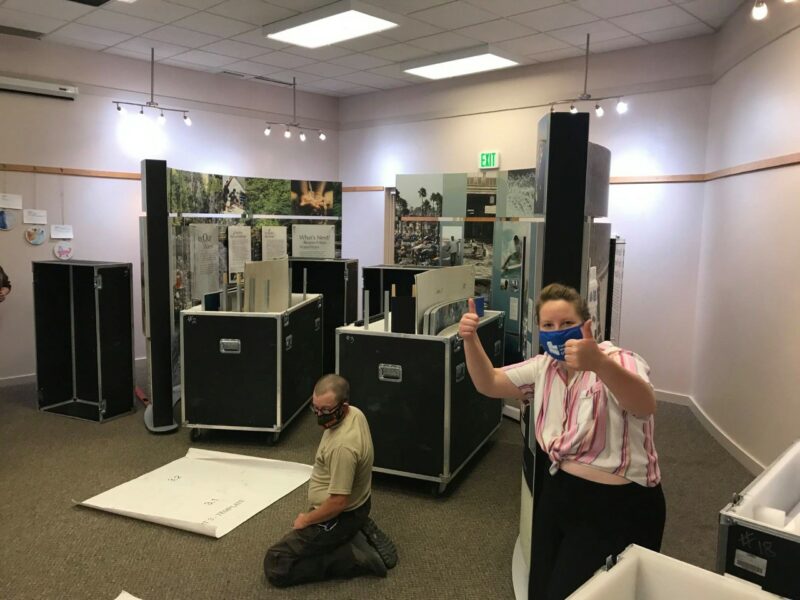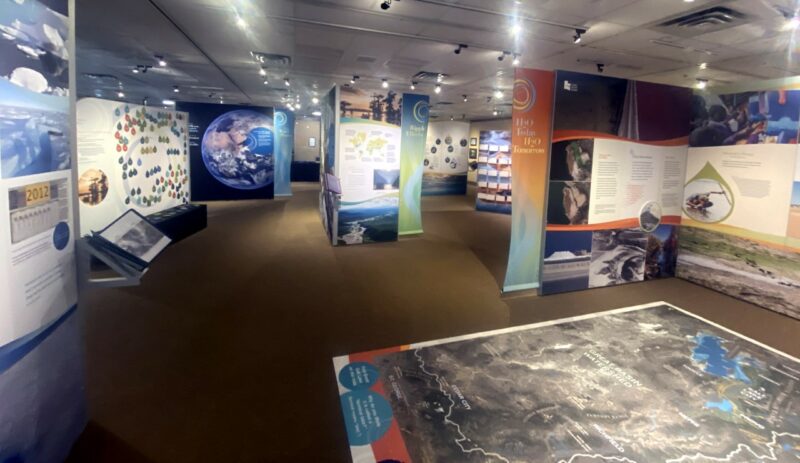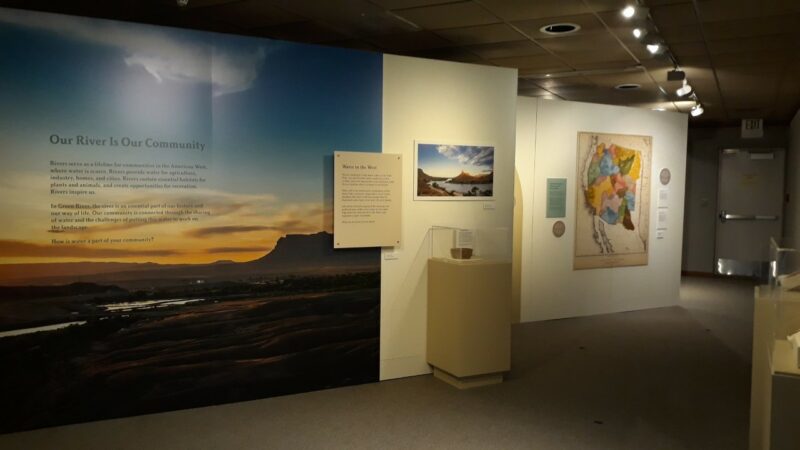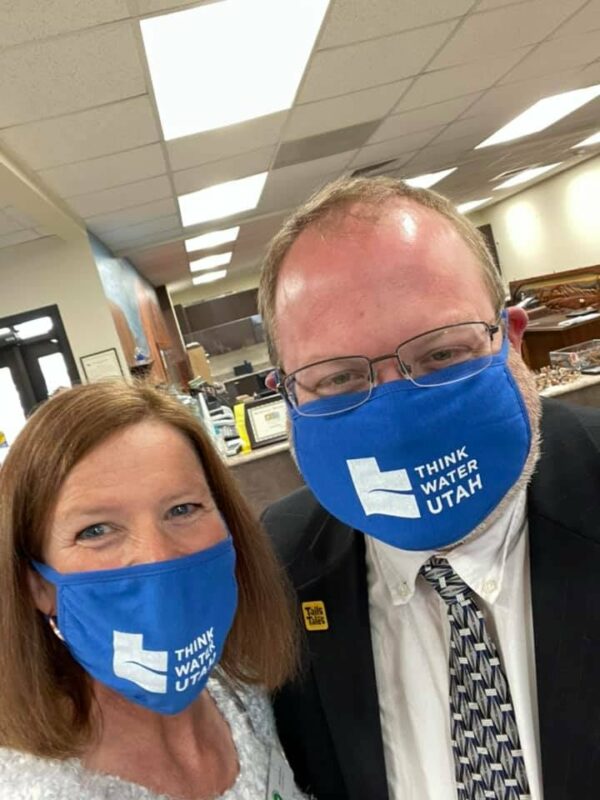All hands on deck: Utah’s statewide water history effort
27 May 2021 – Megan Weiss
Think Water Utah is a statewide collaboration addressing the critical topic of water and is presented by Utah Humanities and its partners throughout 2020-2022. It allows local museums and their communities to critically consider the role of water in shaping human experience and culture across the state. The 2021 National Council on Public History (NCPH) annual meeting was scheduled to have met in Utah and attendees would have had a chance to see this project in person, but that opportunity was lost when the meeting took place online due to the pandemic.
Public historians owe it to their communities to include the natural world in the stories we share. Cody Ferguson explained in a History@Work essay that there are “natural connections” between public history and environmental history: “for the various publics we serve . . . air, water, landscape, food, and health are tangible realities.” After Bruno Latour challenged the human/non-human dichotomy by saying the material world is an agent of change just as much as humans are, nature has become a more central point of analysis for historians. Additionally, political scientists such as Jane Bennett suggest that natural resources like watersheds and coal mines might have agency and legal rights of their own. If we think about our natural resources as agents of change—agents of history—we can broaden our contemporary conversations around environmentalism and human ecology so that they are informed by the past and include the power of the natural world around us; we can see how intertwined with the environment our stories really are.

Utah Humanities and Fremont Indian State Park Museum staff installing the “Water|Ways” exhibit in August 2020. As part of the Smithsonian’s Museum on Mainstreet Program, “Water|Ways” allowed local museums to explore the topic of water while learning more about museum best practices for exhibit design, curation, and promotion. Photo credit: Utah Humanities.
Thinking about nature in history is currently happening all across Utah, as Utah Humanities, in collaboration with the Smithsonian Institution’s Traveling Exhibitions Service (SITES), brings training and exhibitions to museums with its Think Water Utah project. Thanks to this collaboration, Utah museums, big and small, are showing their essential role in facilitating conversations about our natural resources. Through these exhibits, collaborations, and training, Think Water Utah enables Utah museums to bring the contentious topic of water use and conservation to their communities, revealing water’s importance historically and today.
The significance of these conversations show that every Utahn has a unique relationship with water and the natural environment. As one of the most coveted resources in the West, Utah’s water history is marked by differing views about its value, use, and place in our lives. With water laws that allow for “first in right” ownership and commodify water down to the last drop, water conflict here really shows how environmental issues are also human issues. Utah is the second driest state in the nation and, by some measures, has the highest per capita water use and the lowest water prices. Think Water Utah has allowed museums to unpack the different meanings of water with their local communities in a way that is mindful of our unique local relationship with this valuable resource.
Think Water Utah has its roots in the collaboration between Utah Humanities and the Smithsonian’s Museum on Main Street (MoMS) program. Created in 1994, MoMS exhibits cover various topics and have toured nationally to over 1,800 small town and rural communities, in partnership with state humanities councils. As part of its mission to support the state’s cultural community, Utah Humanities collaborates with the Smithsonian MoMS program and other state partners to provide the training and resources for Utah’s smallest museums—70% of which operate with a budget of less than $100,000—to develop programming and exhibitions.
Currently, Think Water Utah includes two Smithsonian traveling exhibitions: Water|Ways and H2O Today. Touring in 2020-2021, Water|Ways is hosted by Fremont Indian State Park Museum, Kanab Museum, Swaner Preserve and EcoCenter, and John Wesley Powell River History Museum. These host sites created companion exhibits and events that speak to their local communities, which are situated across the state in vastly different landscapes, from alpine ski areas and river rafting towns to rural agricultural areas. Topics covered include looking at the critical importance of watersheds in sustaining human life in Utah and the role of water recreation in maintaining a sense of community.

“H2O Today” at the Utah Cultural Celebration Center. This exhibit explores the beauty and essential nature of water, our planet’s lifeblood. Through immersive content, interactives, and digital media, the exhibition interprets the diversity and challenges of our global water sources, as well as Utah’s unique relationship with water. Photo credi: Michael Christiansen
H2O Today, another project included under the Think Water Utah umbrella, developed from foundations at the Smithsonian Institution and other museums. H2O Today takes a global look at water access and resources, and Utah Humanities curated additional content that specifically addresses Utah’s water history. Constructed with the help of Salt Lake City fabricator Insight Exhibits, H2O Today zooms out and places Utah water consumption in the context of a rapidly changing world, where population growth and climate change are diminishing precious water resources. The exhibition is hosted in 2021-2022 by West Valley Arts at the Utah Cultural Celebration Center, the Uintah County Heritage Museum, and the Bear River Heritage Area in partnership with the Hyrum City Museum and dozens of other regional organizations. As with the MoMS Water|Ways exhibit, these museums are all curating their own companion exhibits and programming.
Through their in-house programming and curation, host sites for both exhibitions have highlighted important local themes that link the topic of water to each community. For example, the importance of the Green River took center stage at the John Wesley Powell Museum in southern Utah. “In the arid West, where water is a force for both division and connection, sharing a watershed is one important way to define a community,” curator Kelsie Hart wrote of their Green River companion exhibit titled Our River is Our Community.

As participants in Museum on Main Street, Utah museums developed their own companion exhibits about Utah’s water history with support from Utah Humanities and others. This example from the John Wesley Powell River Museum in Green River addressed the importance of the town’s local waterway in shaping community unity and division. Photo credit: Kelsie Hart
Other host sites supported by Utah Humanities’ capacity-building training were able to use their funding to expand their museums’ connections to local Indigenous community leaders. Curator Amy Larson at Fremont Indian State Park explained that “through the support of Utah Humanities, we were able to offer travel pay and an honorarium to the Paiute elders who came to consult with us” for the companion exhibit to Water|Ways. “This was an important step for rebuilding relations with tribes . . . We hope to build on this and use other grants in the future to include our local band and other Paiute members in future consultations and programming.” The inclusion of local tribes in any public history work in Utah is incredibly important as part of recognizing their experience in the state’s history. Centering Native knowledge in environmental history helps us construct a more full picture of the intersection of themes such as colonization and the exploitation of nature.
In addition to enhancing interpretation of the history of water across the state, many Think Water Utah partners came to use one another as resources due to the challenges of serving the public during the pandemic. The multiple host sites have formed a cohort of museums that compared ideas about how to host an exhibit during COVID-19 safely, including exhibit designs that are hands-free and use the Think Water Utah-branded stylus tool. Through training provided by the National Network for Ocean and Climate Change Interpretation (NNOCCI), host sites also learned how to approach the topic of climate change with visitors who may have difficulty engaging with conversations about global warming. Because of all this, the Think Water Utah project provides a model of what kind of stories we can share when we come together as a team of museums, historians, educators, scientists, and community organizers to make better sense of our connection to nature and its layered meanings within diverse communities.

Utah Humanities director Jodi Graham (left) and Uintah County Library director Sam Passey sport the “Think Water Utah” masks. Taken during the opening of “H2O Today “in Vernal, Utah, at the Uintah County Heritage Museum, April 26, 2021. Photo credit: Jodi Graham
Our intertwined relationship with the natural world is experiencing unique strain in the age of climate change. Although Utah’s urban and rural communities are approaching water conservation issues in a myriad of ways, history can shed light on the whys of these environmental changes. “Water is life,” remarks Greg Smoak, director of the American West Center at the University of Utah and state scholar for the Think Water Utah project, in Utah Water Ways. “There can be no future without water. While the challenges facing Utahns appear daunting, the story of Utah’s waterways can offer us a guide. By trying to understand the natural world, its limitations and reasonable opportunities, and considering the many ways in which Utahns have engaged our precious waters, we might use history to map a sustainable way forward.”
~Megan Weiss is a PhD student at the University of Utah. She has worked in public history for over four years, including as a collections manager and reference archivist for local institutions such as the Salt Lake County Archives and Fort Douglas Military Museum. Now a program assistant for Utah Humanities, her primary research interests include material culture, race, and gender in the American West.



